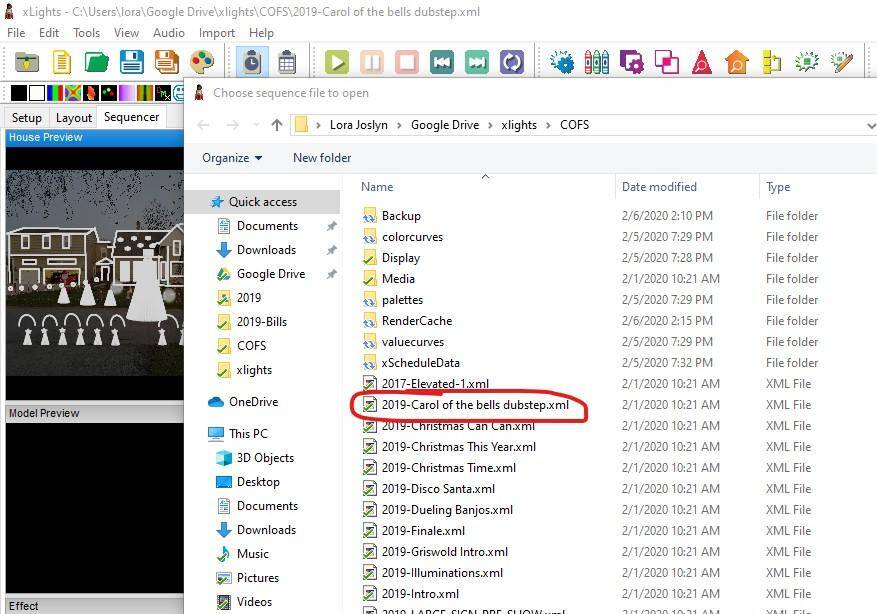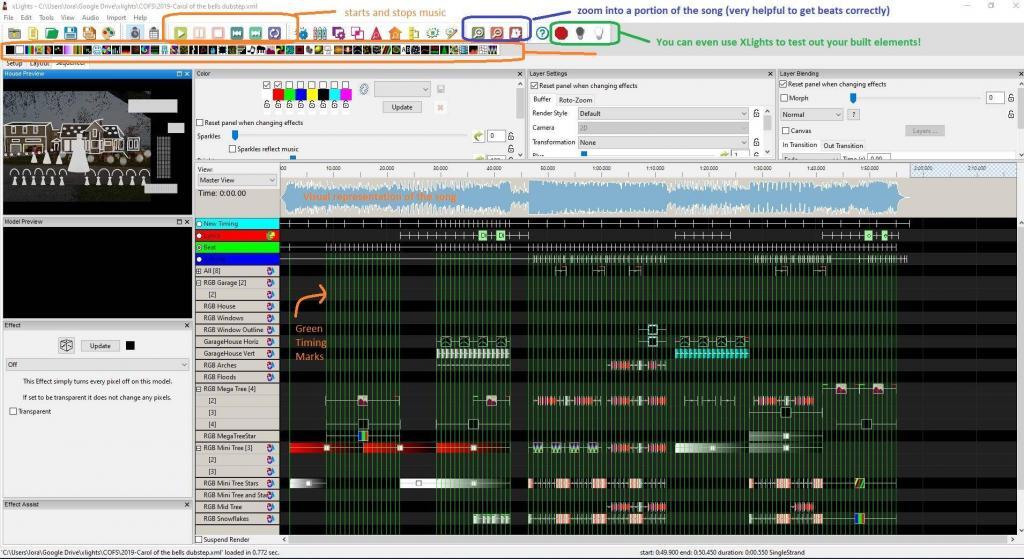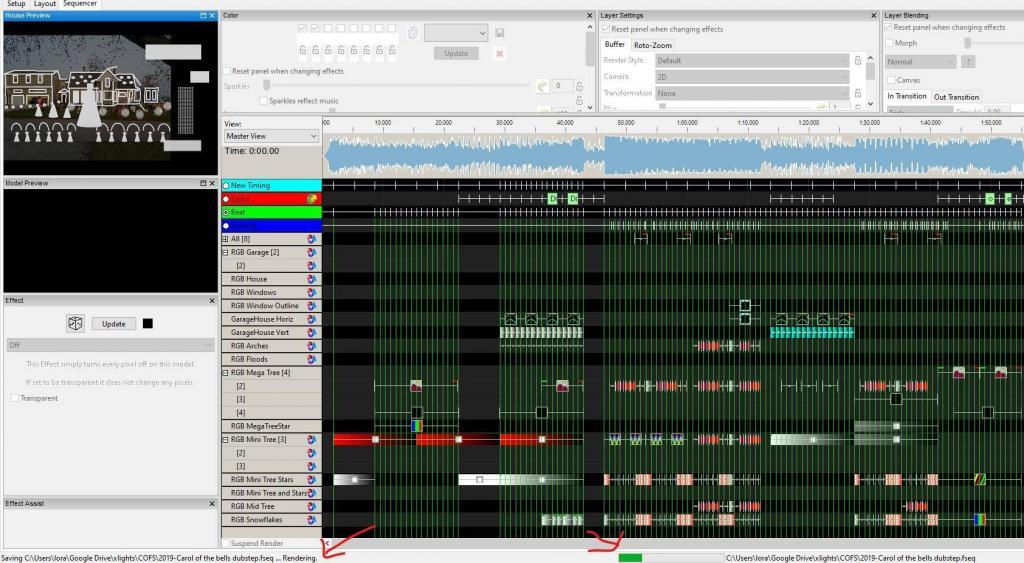The sequencer tab is where you will spend hours at a time to make your lights dance to the music! The great thing about this software is you can figure out what your yard is going to look like before you build your first item.
What is a Sequence?
A sequence is a file that contains information on your display and how the software and hardware will turn on and off your lights to music. To create a sequence, you typically need:
- A song
- A layout
- A lot of time
Yes, sequencing takes a lot of time, but if you read my first post Should I Create a Christmas Display, you already know that the effort will be worth it in the end.
Open a Sequence
Let’s see how one of the sequences I made looks in XLights. In the Sequencer tab, select File-Open and pick a song. I’m going to open 2019-Carol of the bells dubstep.

You see that this file type is XML – this is one of the big reasons why sequence sharing is possible. These files are small since they are providing only data related to timing and overall elements/effects/etc.
You can take someone’s XML files and fairly easily re-purpose them to match your display setup. It’s not plug-and-play, but definitely gets you up and running quickly. I highly recommend to start out doing this for your first sequence.
And speaking of this, I would recommend for you to watch some of the YouTube videos on XLights essentials. This will get you into the details of this hobby quickly! This is a 5-part series on how to import the songs and sequences for XLights around the World.
Well, let’s get back to our display. When a song is opened, you’re going to see many different sections. Each of these sections can be moved around based upon what you need. For instance, I usually move the House Preview window onto my 2nd screen so I can see what my house would look like easily. You can change sizes of icons and a ton more than I could explain in a short post. XLights Wiki is your friend. Seriously.
The green lines are timing marks. You manually enter those to help you know beats and phrases of the song are located. I tend to do this myself manually, but there are other options that you can use.

To see what the simulation looks like, you must save the file. This updates the XML file, but *also* creates a separate .FSEQ file that has a lot more detailed information about each bulb. This file is not so small! It may actually take a little time to save, so don’t be surprised. Some of my sequences are old and are not probably optimized as if you created one now….
As a side note… the .FSEQ files are the files you would upload to your FPP (Falcon Pi Player).

Now, click the green play button at the top. You will see everything in the house preview while watching where you are in your sequence on the main portion of your screen. You can click on the + and – buttons to zoom in on your sequence. You can even slow down the song to make sure your beats are perfect (Go to Audio- Play 3/4 speed, etc.). Remember to check out the help section in the software to get a ton more detail.
Did I say how amazing this software is? I will say that once I was completed with a song, I’d have my family come over and watch it on the screen. It can be pretty impressive just there. Then you can create the HUGE wow factor by making it happen in your yard.
Leave a Reply
You must be logged in to post a comment.